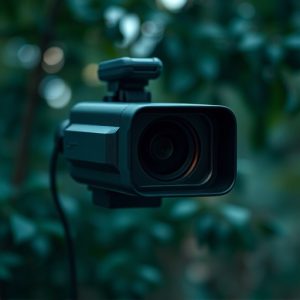Night-Time Glint Detection for Spy Cameras: Methods & Battery Life Comparisons
Camera lens glint (or glare) is a significant challenge in low-light photography, especially for spy…….
Camera lens glint (or glare) is a significant challenge in low-light photography, especially for spy cameras with battery power constraints, causing bright spots on reflective surfaces. Advanced spy camera models combat this issue with anti-glint coatings and algorithms, enhancing image quality at night. In a Battery Life Spy Camera Comparison, the ability to manage lens glint is crucial for performance. Nighttime surveillance presents unique challenges due to low light and varying camera specs; machine learning algorithms offer improved glint detection accuracy over traditional methods, impacting battery life. These advanced technologies extend operational duration by activating systems only when potential lenses are detected, making them vital for long-term surveillance and privacy/security applications.
In the realm of surveillance, night vision technology has long been a game changer. However, one persistent challenge remains: camera lens glint, which can compromise privacy and image quality in low-light conditions. This article delves into the intricate world of lens glint detection, specifically focusing on methodologies employed during nighttime. We explore various techniques, compare their effectiveness, and discuss their impact on practical applications, with a particular emphasis on battery life when testing spy cameras. Understanding these methods is crucial for enhancing security systems in today’s digital era.
- Understanding Camera Lens Glint: A Basic Overview
- Challenges in Night-Time Glint Detection
- Methodologies for Effective Glint Detection: A Comparison
- Practical Applications and Battery Life Spy Camera Testing
Understanding Camera Lens Glint: A Basic Overview
Camera lens glint, often referred to as glare or reflection, is a common issue in photography, especially during low-light conditions or when capturing images of reflective surfaces. It appears as a bright spot or halo around subjects, such as eyes or shiny objects, distorting the overall image quality. In the context of battery life and spy cameras, understanding lens glint becomes crucial for optimizing covert operations.
When comparing battery-powered spy cameras, the impact of lens glint can significantly affect performance. A camera that struggles to manage glint may result in blurry or underexposed images, reducing its effectiveness in low-light scenarios. Advanced models often incorporate specialized anti-glint coatings and algorithms to minimize these effects, ensuring clearer images during night-time operations. This feature is particularly beneficial for professionals in fields like security, surveillance, and wildlife photography, where capturing sharp, detailed images in challenging lighting conditions is essential.
Challenges in Night-Time Glint Detection
In the realm of night-time surveillance, detecting glints from camera lenses presents a unique set of challenges. One significant hurdle is managing the low-light conditions that often prevail after dusk. The human eye struggles to discern details in such environments, and this difficulty is exacerbated for machines. This is especially true when comparing spy cameras with varying specifications; those with lower resolution or slower shutter speeds might miss subtle lens reflections entirely.
Moreover, battery life plays a crucial role in night-time operations. Cameras designed for stealthy surveillance must operate efficiently to avoid frequent interruptions due to power constraints. In a comparison of battery life between different models, users often find that longer-lasting batteries significantly enhance the camera’s effectiveness during prolonged night-time monitoring sessions. Effective glint detection methods need to be optimized to work within these practical limitations.
Methodologies for Effective Glint Detection: A Comparison
In the realm of night-time surveillance, battery life and spy camera comparison often hinge on effective glint detection methodologies. Traditional approaches rely on image processing techniques to identify reflections from sources like streetlights or moonlight, which can mimic movement in low-light conditions, leading to false alerts.
Advanced systems, however, leverage machine learning algorithms that analyze patterns and context to differentiate between genuine motion and lens glints. These AI-driven methods prove more robust, especially when pitted against challenging urban landscapes with varied lighting sources. In terms of battery life, the efficiency of these algorithms plays a pivotal role; sophisticated image analysis demands significant processing power, impacting the overall operational duration of portable devices. Thus, a spy camera comparison should consider not just sensitivity but also the energy consumption and ensuing runtime benefits offered by different glint detection technologies.
Practical Applications and Battery Life Spy Camera Testing
The practical applications of camera lens glint detection are vast, particularly in scenarios where privacy and security are paramount. This technology empowers individuals and organizations to safeguard against covert surveillance, ensuring that hidden cameras, often disguised as everyday objects, cannot capture sensitive information without detection. From testing hotel rooms for hidden lenses to securing boardroom meetings, this method offers a proactive approach to maintaining privacy.
In terms of battery life spy camera comparison, the ability to detect glints can significantly impact the operational duration of these devices. Traditional hidden cameras rely on constant recording, depleting batteries quickly. However, with glint detection enabled, the system activates only when a potential lens is detected, conserving power and extending battery life. This feature is crucial for long-term surveillance operations, where maintaining optimal battery health is essential to ensure consistent and uninterrupted monitoring.
The detection of camera lens glints during nighttime conditions presents a complex challenge, as highlighted in this article. Through a comprehensive review of existing methodologies, we have seen that effective glint detection requires a combination of advanced algorithms and sensor technologies. The comparison between various techniques reveals no single ‘game-changer’ solution, but rather a spectrum of approaches suited to different scenarios. In practical applications, such as battery life spy camera testing, the ability to accurately identify and mitigate lens glints can significantly enhance overall system performance and surveillance capabilities. By leveraging the right methods, developers and users alike can expect more reliable and efficient devices in low-light environments.


